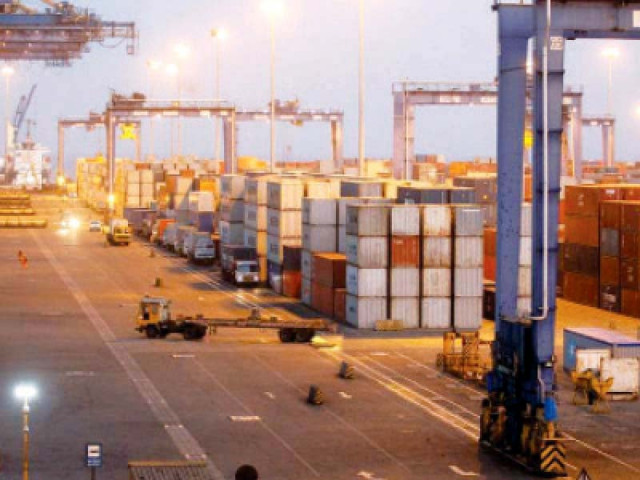Trade gap shrinks to $11.5b in Jul-Oct
Deficit contracts 27% primarily due to steep fall in imports

Pakistan has managed to cut its trade deficit by $4.2 billion, or nearly 27%, by blocking imports during the first four months of current fiscal year, which will compensate for the delay in channeling foreign loans.
The trade deficit shrank 27% to $11.5 billion in the first four months of current fiscal year solely on the back of a steep fall in imports, reported the Pakistan Bureau of Statistics (PBS) on Wednesday.
Exporters kept disappointing despite getting hundreds of billions of rupees in subsidies, cheap loans, paying low taxes and 100% depreciation of the rupee in four years.
The gap between imports and exports came in at $11.5 billion in the July-October period, which was 26.6%, or $4.2 billion, less than the comparative period of previous fiscal year.
According to the PBS, exports stood at $9.5 billion, up $89 million, or less than 1%, during July-October FY23.
The annual export target of nearly $38 billion has become irrelevant due to the poor performance.
There is no accountability of hundreds of billions of rupees given in annual subsidies to the exporters. Finance Minister Ishaq Dar last month approved a Rs100 billion subsidy package for the exporters that were not linked to any performance standards.
The subsidy will be given on electricity, although there is no provision for the money in the budget. The government had budgeted only Rs20 billion in electricity subsidy for the exporters.
Imports amounted to $21 billion during the July-October period, down $4.1 billion, or 16.2%, the report stated.
The reduction in imports has been achieved by erecting non-tariff barriers like the central bank permission for the import of plant, machinery, equipment and vehicles. This will hurt the prospects of economic growth.
The State Bank of Pakistan (SBP) has taken administrative measures to contain imports. It is examining almost every letter of credit, has introduced import quotas and even restricted imports through open accounts.
The SBP has not given a timeline for lifting the import restrictions, saying that inflows and outflows of the US currency would determine the timing of relaxing the conditions.
Industrialists are complaining that due to these limitations, they have not been able to import goods required for producing export products.
But the government does not have a choice as plans to get massive foreign loans are not fully materialising. So far, it has received $3.7 billion in foreign loans and a public statement for the rollover of $3 billion by Saudi Arabia.
According to the IMF, Pakistan needs at least $34 billion for external debt servicing and bridging the current account deficit during the current fiscal year.
On a month-on-month basis, exports contracted 3.7% to $2.37 billion in October 2022 over the preceding month, a dip of $75 million. Imports stood at $4.6 billion with a drop of 13.2%,
or $711 million, over the preceding month.
It was the second consecutive month when imports fell significantly. As a result, the monthly trade deficit contracted to $2.3 billion, which provided a relief of $636 million, or nearly 22%.
For current fiscal year 2022-23, the government has set the trade deficit target at $27.8 billion, which requires a reduction of 42% from last year.
The import target for the current fiscal year is $65.6 billion, which will require a reduction of 22%.
In the last fiscal year, Pakistan’s trade deficit widened at an unsustainable pace of 55%. The higher deficit took a heavy toll on the foreign exchange reserves, which dropped 63% from the peak of $20 billion in August last year to $7.4 billion last week.
On a year-on-year basis, exports showed a contraction of 3.8% in October and stood at $2.37 billion against $2.5 billion in the same month of previous year, according to the PBS. In absolute terms, there was a dip of $93 million in exports.
Imports were lower by $1.73 billion, or 27%, in October compared to the same month a year ago. Consequently, the trade deficit narrowed by 42% year-on-year to $2.3 billion in October, showing a reduction of $1.64 billion.
Published in The Express Tribune, November 3rd, 2022.
Like Business on Facebook, follow @TribuneBiz on Twitter to stay informed and join in the conversation.



















COMMENTS
Comments are moderated and generally will be posted if they are on-topic and not abusive.
For more information, please see our Comments FAQ